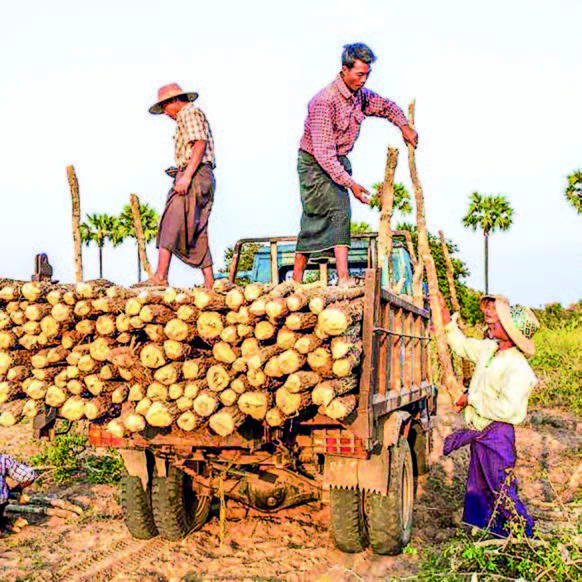THANAKA trees in Myanmar have been discovered and used for more than 2,000 years. People have valued and used Thanaka for its many beneficial properties, such as refreshing and purifying the mind, its pleasant fragrance, its ability to moisturize and cool the skin, and its ability to smooth and beautify the complexion. Due to these qualities, Thanaka has been highly valued and widely used. Therefore, cultivation has expanded, and more than 35,000 acres of Thanaka are now grown throughout the country.
Thanaka trees are also found in countries such as Sri Lanka, western India, Thailand, and Pakistan. However, they are most widely cultivated in the central dry zone of Myanmar with little rainfall. Due to their ability to withstand drought and intense heat, Thanaka trees are considered valuable treasures of the Dry Zone regions.
Thanaka trees can grow to a height of 20 to 30 feet, and their trunks and branches are covered with hard, sharp thorns about half an inch to one inch long. In their early stages, the trees have smooth bark, but as they mature, the bark becomes thicker and rougher. The leaves are compound with multiple leaflets, and the tree produces small, pale-yellow flowers.
When the fruits ripen, they can be harvested for seeds. After harvesting, the Thanaka fruits are soaked in water and only the seeds that sink are used for cultivation. The seeds that float are typically not viable.
The best soils for cultivating Thanaka are loamy and gravel soils. Although it can be grown in various soil types, it does not thrive in clay, saline, or waterlogged soils. As Thanaka can be planted in the sands, the survival rate of young trees is low, and growth is usually poor.
Thanaka trees can be cultivated in regions with annual rainfall ranging from 10 to 40 inches. Transplanting can begin after the seedlings are about 45 days old. For intercropping purposes, the spacing between trees can be eight feet by four feet or eight feet by five feet. Intercropping with crops such as sesame, green gram, or groundnuts, which are compatible with the local soil and climate conditions, is also practised. In some cases, people grow Thanaka trees individually in their home compounds on a manageable scale.
After planting, it is necessary to clean the grass at least once a year and apply both chemical and organic fertilizers. Though the trees can be harvested for sale at the age of 8 to 10 years, the best quality Thanaka wood comes from trees that are about 30 to 35 years old.
If harvested at around 10 years of age, the tree may regrow one or two shoots from the stump. However, harvesting at 30 to 40 years results in better quality but reduced regrowth due to the age of the tree.
Thanaka is a part of Myanmar’s traditional cultural heritage and a source of national pride due to its high quality and versatile properties. The main cultivation areas include Ayadaw, Myaing, Yesakyo, Pakokku, Shwebo, Pauk, Butalin, Yinmabin, and Monywa townships. More than 350,000 acres of Thanaka are currently being cultivated in Myanmar. — Zeyar Naing (Shwe Kan Myay)/KTZH


